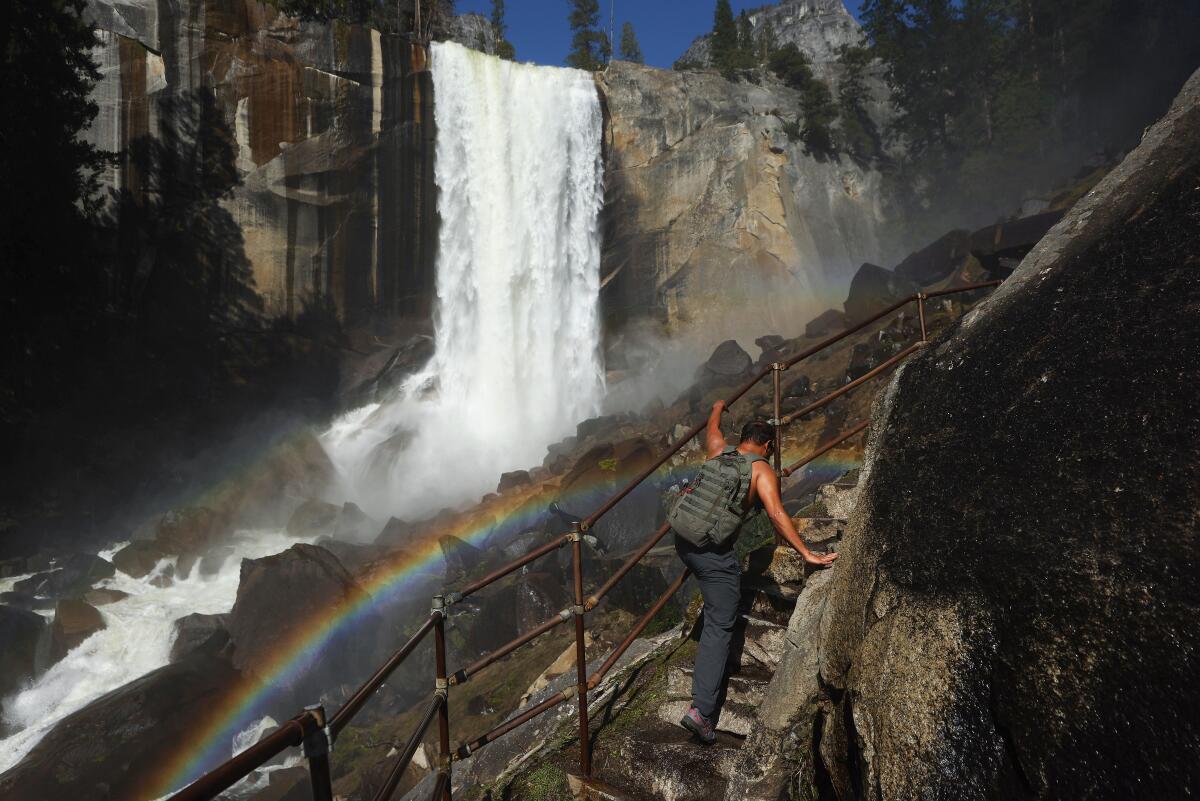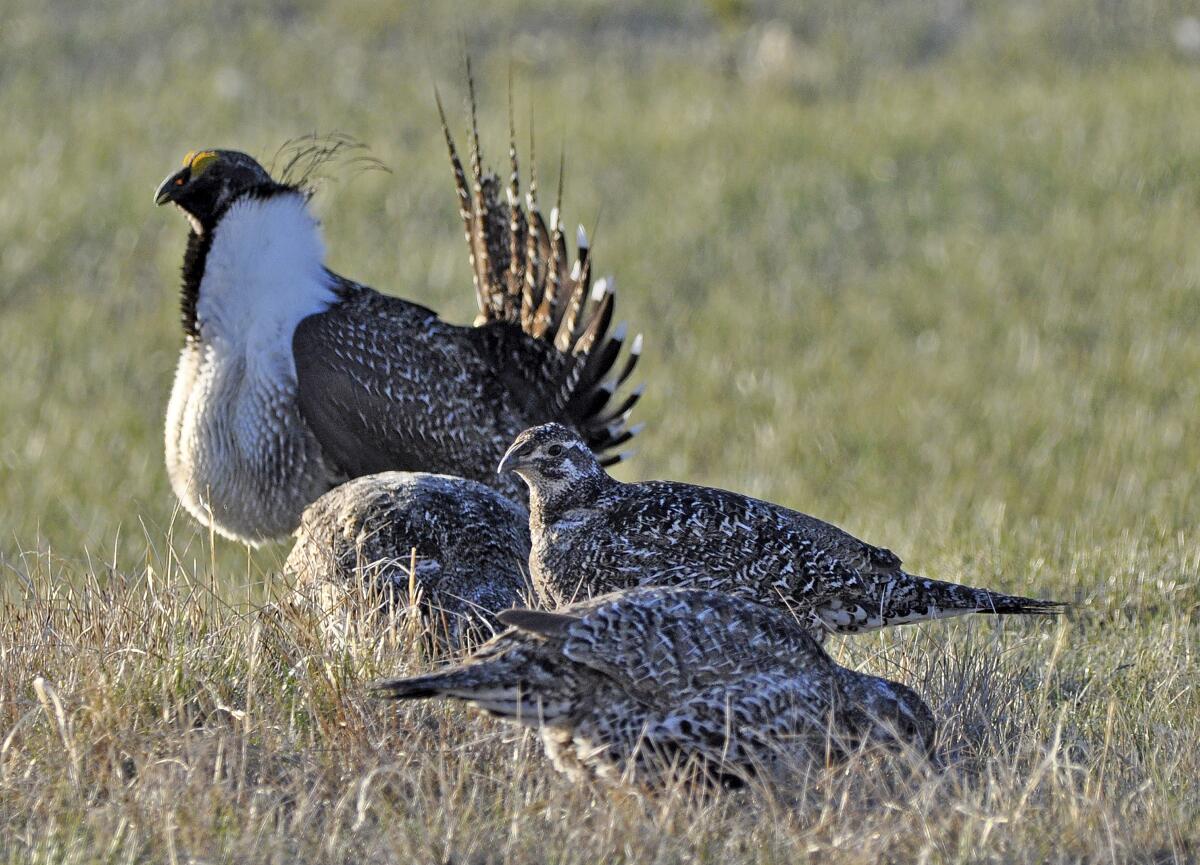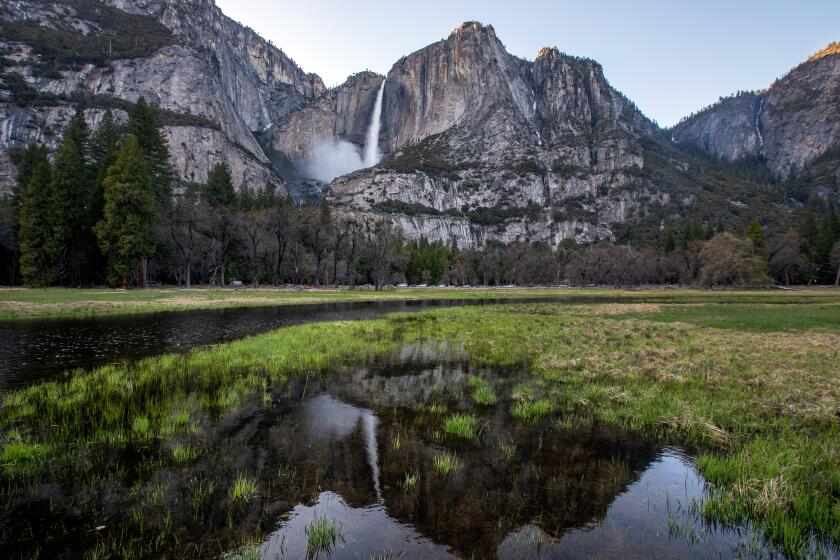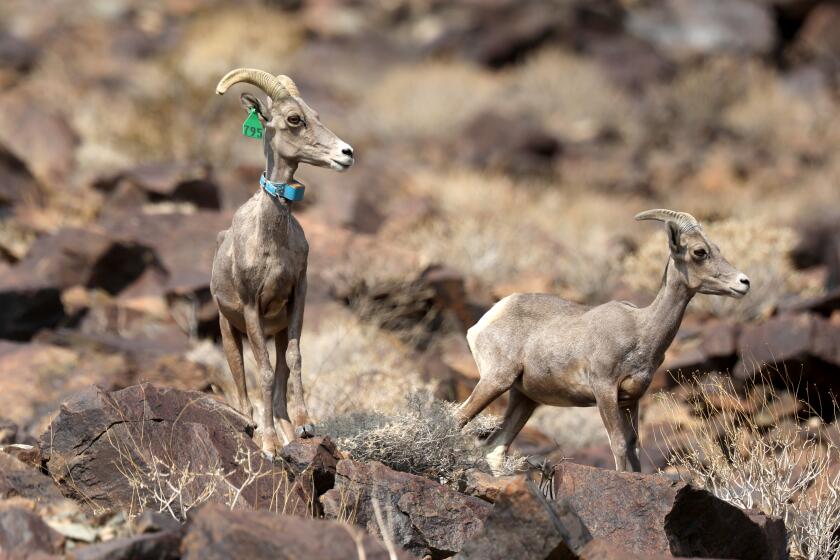Epic snowpack upends rhythms of life for many species in Sierra Nevada range

- Share via
The Big Melt is finally underway in the Sierra Nevada range, and soon there will be few wild places beyond the reach of water sounds: dripping, gurgling and roaring as runoff flows from lofty peaks to sage plains below.
But the whiplash change from extreme drought to epic snowpack is having very different consequences for a variety of species.
“In the ever changing ebb and flow of water in California, no given year is great for all species,” said Joshua Viers, a professor at UC Merced specializing in the hydrology of the Sierra Nevada. “But in a year like this one, which is exceptional by all measures, we are looking at a resetting of the dynamics of the entire ecological canvas from the redwoods to the desert.”

Competing interests are already playing out from inundated breeding grounds for waterfowl in Central California to snow-covered meadows near the California-Nevada border where an isolated, genetically distinct clan of bi-state sage grouse may forgo making ostentatious displays of romance because they have no place to hide from predators.
“Things that were only in history books are now happening before our eyes,” Viers said. “A growing concern for ecosystem and water managers throughout the state is that we can expect increasing periods of prolonged drought punctuated by pronounced wetness from now on.”
Ryan Burnett, head of the nonprofit Point Blue Conservation Science’s Sierra Nevada group, agrees. “It’s a complicated situation for both wildlife and wildlife managers,” he said.
How did a dirt parking lot in the San Gabriel Mountains become a major flyway for migrating birds? Scientists can only guess.
“For example, protected migratory birds will continue moving north along the Pacific Flyway because they didn’t get the memo that there was 30 feet of snow on their rest stops in the Sierras,” he said. “But birds endemic to the American West that nest close to the ground at high elevations, such as white-crowned sparrows, just don’t breed in heavy snow years like this one.”

Local populations of bears, deer, bobcats, and other common mammals along the western and eastern slopes of the Sierra Nevada range are expected to thrive, scientists say. So will amphibian and native fish populations clinging to existence in streams that had been reduced to small ponds but will soon be flowing again and buzzing with insects.
Jason Coslovich, a biologist with the California Waterfowl Assn. in Central California, suggested that things are looking better for ducks such as mallards and gadwalls than at any other time in the last three years — a period spanning the most severe drought in 1,200 years.
Most of Yosemite Valley is closed due to potentially perilous snowpack and flooding.
“While I can’t guarantee that Central California will resemble a waterfowl convention after all the snowmelt moves downstream,” he said, “more surface water means more mallards and gadwalls will be sticking around to breed — so expect more ducks next year.”
Typically, it takes about six months for mallards to pair up, build a nest, lay a clutch of nine to 12 eggs, and begin raising hatchlings.
Plans to build a solar energy farm in the Mojave Desert have angered conservationists who, say it will restrict movement of bighorn sheep.
“A year ago, the local population of mallard ducks was down 25% due to drought,” Coslovich said. “Many of our ducks decided to search for better places to nest in Oregon and northern Idaho.”
This year, those birds will fulfill their life cycles in Central California rivers and lakes brimming with snowmelt, as well as in the vast flooded fields of rice farmers who are once again receiving 100% of their state water allocations.
Aerial surveys of booming waterfowl populations across the state are currently being conducted by California Department of Fish and Wildlife biologists. The results are expected to become available later this year.
Separately, there is good news for the more than 40,000 California gulls that nest on islands in Mono Lake, east of Yosemite National Park: They will be less vulnerable to predators including coyotes because melting snow is expected to raise the surface level of the lake several feet by year’s end.
The potential bad news, however, is that the inflows could cause the lake’s water column to begin stratifying into a warmer, lighter upper layer, above a colder, lower layer, limiting the productivity of brine flies and shrimp that migrating birds feed on.
“After heavy rains and flooding in 1983, the lake stratified into hard layers,” Burnett said, “that took a few years to break up.”
A more pressing concern is the fate of the dwindling population of bi-state sage grouse, one of the most legally contested birds in America. There are only about 3,300 of the birds left — far fewer than the 5,000 that biologists say is required to sustain the population.
The U.S. Fish and Wildlife Service on Thursday approved reopening consideration of whether to list the bi-state sage grouse as endangered or threatened.
The birds were proposed for listing in 2013, but federal wildlife authorities abandoned the proposal two years later. In 2018, a federal court judge ordered the agency to re-evaluate the species’ situation.
Two years later, however, the Trump administration withdrew that proposal.
“The service’s announcement is a step in the right direction,” said Ileene Anderson, a biologist at the Center for Biological Diversity.
“The bi-state sage grouse is having a tough year because of the epic snow on its habitat,” she said. “I’m worried these beautiful dancing birds may not be able to dig deep enough to reach sagebrush, their primary food source.”
Only five months ago, biologists were struggling to determine how much water was needed to sustain the birds in an era of less snowpack, shorter rainy seasons and periods of prolonged drought.
Now, they worry that the rare birds are unusually easy prey for hungry golden eagles and coyotes because their breeding grounds are still blanketed in bright white piles of snow.
“In normal years, sage grouse use their coloring to hide in sage and tall grass,” Burnett said. “But where can they go when their breeding grounds are covered in white snow?”
“I don’t know the answer to that question,” he said. “I don’t think anyone does.”










